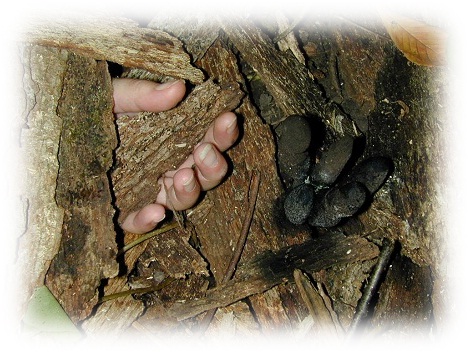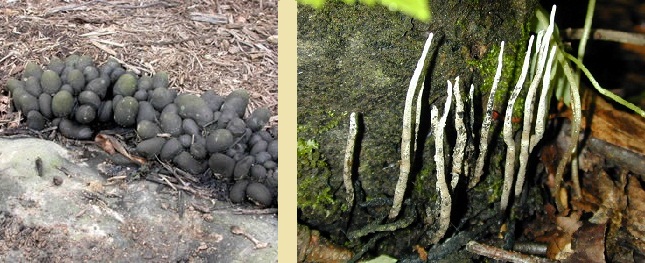As you browse through this website, you will learn
information about the peculiar dead man's fingers fungus. As the
common name suggests, Xylaria polymorpha is recognized on the
forest floor by its black finger-like fruiting bodies that resemble
the fingers of a rotting corpse buried just beneath the surface.
Thankfully, these dead man's fingers are not connected to a dead
body, but are a part of a fascinating fungus.

Xylaria polymorpha displays more than just the notorious dead finger appearance. In early spring, the young fruiting bodies first appear as a pale bluish color with a white tip. This color comes from the conidia (asexual spores) covering the entire fruiting body. Eventually, the conidia begin to fall off, leaving behind a brown-black color. Towards fall, Xylaria polymorpha forms wrinkles and some pimples on the outside of its dark fruiting body, resembling dried out animal feces (YUCK!!)10.
Besides its cool color change, Xylaria polymorpha (and other Xylaria species) have many other very interesting things about them. To name just a few, Xylaria can live inside of termite nests, be used to make violins, and even make antimicrobial compounds.
To continue to learn more about this amazing fungus, I recommend you start at the classification page.
This website was made as a part of an ongoing project of the biology department at the University of Wisconsin-La Crosse. To see other websites of a wide variety of organisms (e.g. Thunnus alalunga and Cynara scolymus) please visit www.multipleorganisms.net. Thank you for visiting!
